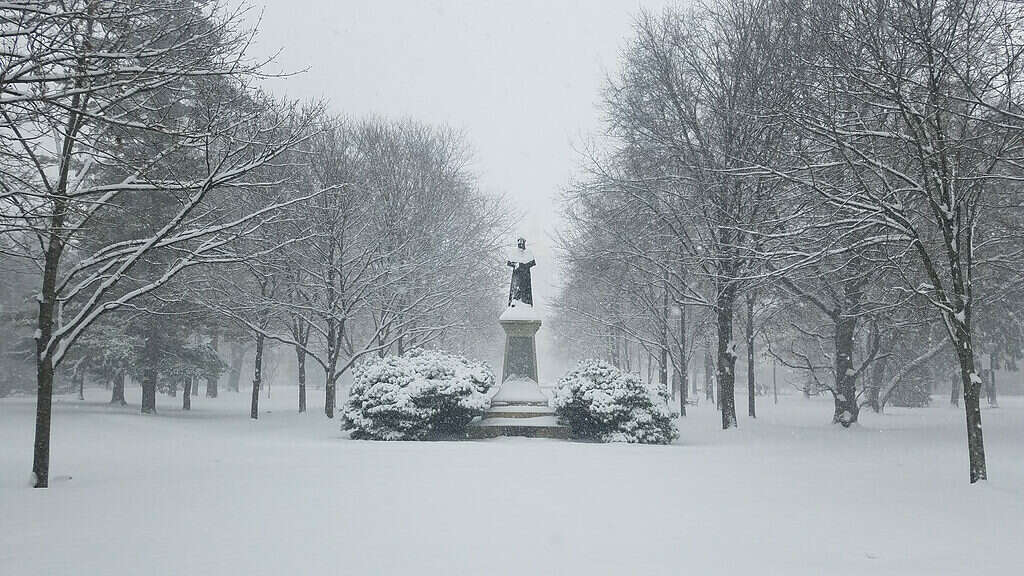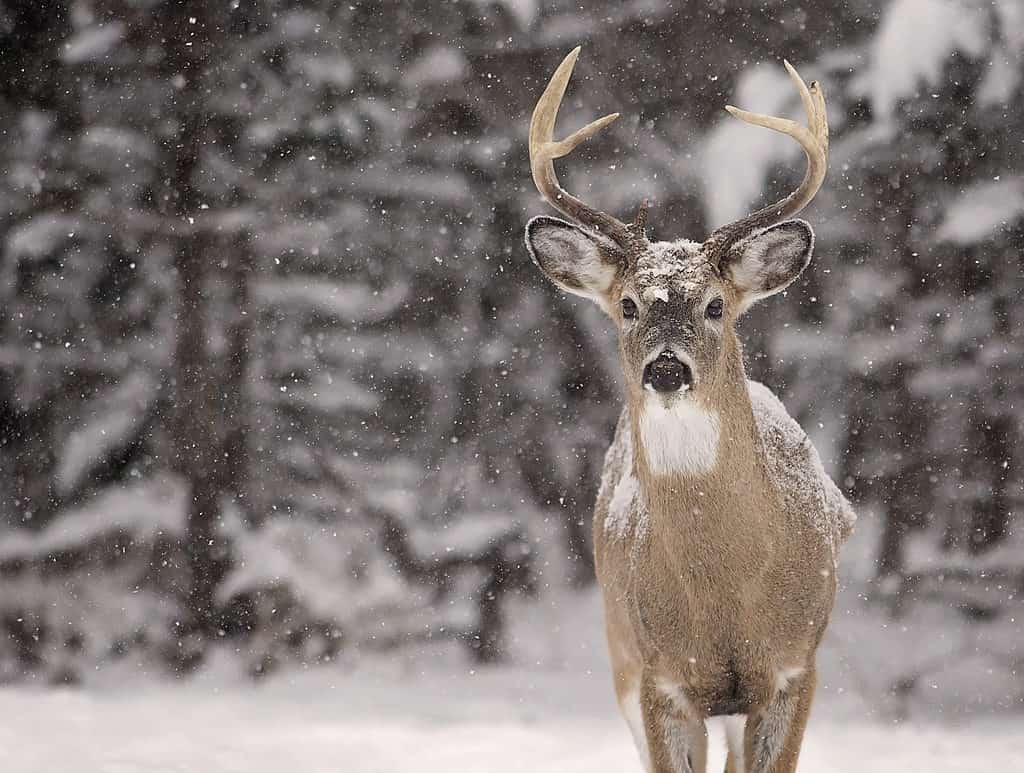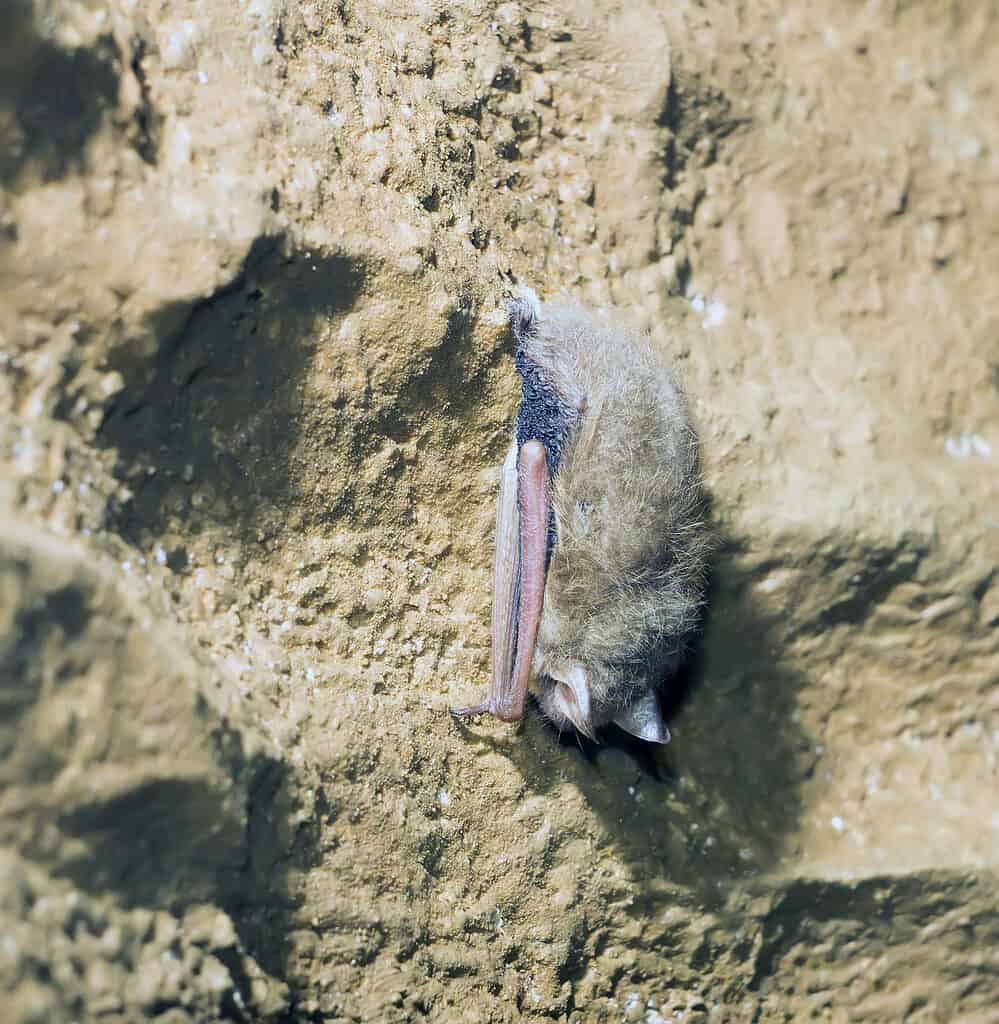November weather in Indiana can be unpredictable. Although winter is approaching and the air begins to chill, you’re more likely to experience a cold rainy day than a snowy one. However, there was one year when an absurd amount of snow was dumped in Indiana in early November. The biggest November snowstorm in Indiana history occurred on November 2, 1911.
November Weather in Indiana
Although you may see a trace amount of snow in November, snowstorms are rare. The ground is warmer than later in the winter. When snow falls this early, it usually doesn’t stick around too long. Further, Indiana is a large state, and weather can vary greatly based on location.

Northern Indiana can experience heavy lake effect snowfall as winds pass over Lake Michigan and blow into Indiana.
©Conor P. Fitzgerald/Shutterstock.com
Northern Indiana gets more snow on average than in the central or southern part of the state. The town of South Bend, located in northern Indiana and situated along the St. Joseph River, has been named “the snowiest place in Indiana.”
What Causes Big Snows in November?
Two main types of weather events can cause big snowstorms in the Midwest in autumn. One is when a cold front moves in, pushing warm air in front of it, creating storms. When the temperature is cold enough, the storms produce significant snow.
Secondly, lake effect snow occurs downwind of Lake Michigan, into northern Indiana. South Bend is located in the “snow belt” of the state and can get heavy snow from the lake effect.
The November Snowstorm of 1911
On November 2, 1911, South Bend, IN, received 18 inches of snow, which remains a record for the biggest November snowstorm in Indiana. The high was in the 40s that day, and the precipitation began as rain. However, as temperatures dropped, the rain switched to heavy snow, dropping 18 inches in South Bend.
A Quick Rebound
Like most autumn snowstorms in this part of the country, the storm was to be short-lived. The snow fell on Thursday, and by the following Monday, temperatures had rebounded into the 50s.
The Great Blue Norther of 1911
Surprisingly, an 18-inch snowfall wasn’t even the most notable weather event to happen in November 1911. A little over a week after the snowstorm, on November 11, 1911, an intense cold front brought record-breaking temperature drops across the central United States, including Indiana.

In 1911, an intense cold front caused extreme temperature drops across the Midwest.
©Ken Schulze/Shutterstock.com
The cold front, known as the Great Blue Norther of 1911, reached Indiana on November 12 when temperatures fell from a high of 75 degrees Fahrenheit to a low of 20 degrees Fahrenheit within a 24-hour period. The cold front brought with it severe thunderstorms and even a few tornadoes. A tornado caused considerable damage to Bedford, IN, also causing the Southern Indiana railroad line to halt due to debris on the tracks.
November Blizzard of 1950
A close second for Indiana’s worst snowstorm happened on November 26, 1950, three days after Thanksgiving. This storm dumped 17 inches of snow in Randolph County, with gusty conditions that created massive snow drifts. Traffic was at a standstill, and public transportation ran five to ten hours late.
Indiana’s Worst Blizzard in Any Month
The Great Blizzard of January 26 to 27, 1978, is remembered for its intense cold and heavy snow. The blizzard happened during an extremely cold and snowy winter. The temperature plummeted to around zero degrees Fahrenheit, but windchills were even worse, dropping to 50 degrees Fahrenheit below zero. That January, Indianapolis set a record for the most snow in one month at 30.6 inches.
Where Do Animals Shelter During Indiana Winters?

White-tailed deer look for shelter in snowstorms in thickets or under evergreen trees.
©iStock.com/Lynn_Bystrom
Indiana has an abundance of wildlife. Its varied topography is home to a variety of animal habitats. In the northern part of the state, where snow falls most frequently, you can expect to find many different animals, including white-tailed deer, cottontail rabbits, squirrels, woodchucks, gray foxes, red foxes, bobcats, and coyotes.
Wild animals in Indiana are well suited to deal with snowstorms, even when they hit a little early in the season. Just like humans, animals will take shelter from cold and snowy weather.
Trees
Trees are a common source of shelter for many animals, including raccoons, opossums, bats, squirrels, chipmunks, and birds. Some animals nest in the branches, while others live within the soft hollows of a dead tree.
Caves

The Indiana bat hibernates in caves during the cold winter months.
©IrinaK/Shutterstock.com
There are several cave systems in Indiana. Here, you may find foxes, wolves, or coyotes taking shelter from the cold. Indiana bats will seek out limestone caves where the temperatures remain stable in the 40s.
Burrows/Dens
Beavers, muskrats, skunks, moles, rabbits, and many other mammals will either dig their den or move into an abandoned one to escape the cold and snow.
The photo featured at the top of this post is © iStock.com/corradobarattaphotos
Thank you for reading! Have some feedback for us? Contact the AZ Animals editorial team.







